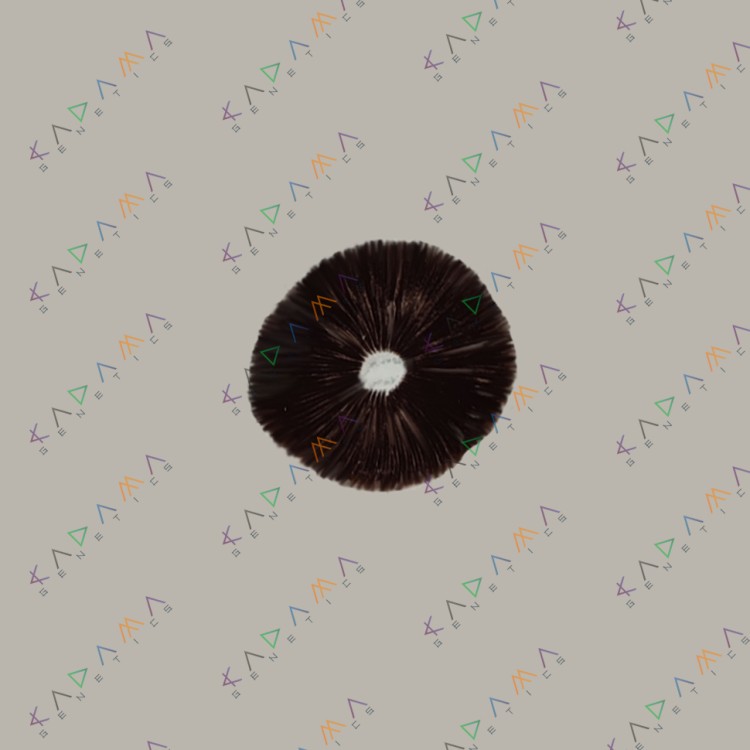Shrouded in an aura of tropical jungle mystery, these Hawaiian psilocybin mushrooms, with their stable genetics and loyalty to growing conditions, offer even the inexperienced ethnobotanists the opportunity to delve into the sacred knowledge and wisdom of the kahuna (Hawaiian shamans).
Origin
The story of who and when first discovered Hawaii mushrooms passes over in silence, revealing to those curious only the place of their natural growth in the Hawaiian archipelago, as the strain's name reveals. The classic spore sample was first introduced to the market by Pacifica Exotic Spora (PES), a Hawaii-based company that was one of the first manufacturers and distributors of psilocybin mushroom spore prints. It was this event that triggered the acquisition of the strain's widespread fame and reputation among mycological connoisseurs.
Appearance
A distinctive feature of mature Hawaii fruiting bodies is the pronounced predominance of yellowish and ochre shades in the coloration of the caps. Their surface is smooth, velvety and often covered with whitish spots. The edges of mature caps are typically slightly curled inward or outward, forming a characteristic funnel or bell shape. Caps can be up to 8 cm in diameter. Spore plates (gills) are grayish purple.
Another mojo of this strain is its graceful long yellowish stems, which are frequently curved and grow up to 20 cm tall! This appearance gives Hawaii mushrooms a truly exotic look, and the dense clusters of fruiting bodies on the substrate surface make you rub your hands with intrigue and excitement for the harvest.
Cultivation and Yields
The variety is tolerant of substrate composition and, due to its tropical origin, can withstand short-term temperature increases up to 36 °C in the incubator. However, in order to ensure stable development of the spawn during the colonization period, it is recommended to follow the optimal regime of 25-30 °C, at which the mycelium will colonize the proposed nutrient medium within 7-15 days after inoculation. In case of lack of experience, use wheat, raw oats, and rye as a substrate. Advanced growers succeed in growing in hay and straw substrate supplemented with pasteurized manure of ruminants.
In the fruiting stage, provide the mushrooms with their native Hawaiian conditions by keeping the relative humidity close to 100% at a temperature of 22-25 °C. A critical aspect of this stage is a constant supply of fresh air into the fruiting chamber combined with a faint light source, either an LED cluster or natural light from a window. This approach minimizes the risk of abortion and promotes the formation of fruit bodies with a beautiful, harmonious shape.
By creating optimal conditions at each stage of development, the grower will enjoy a decent yield of 250-350 g of fresh mushrooms per 1 liter of substrate in the first flush. The second and third waves will yield 150-200 g each. If you want to make the most of the strain's quantitative potential, grow Hawaii in a monotube or using the "hay sausage" method, which, depending on the size of the substrate block, will yield 500-1000 g of raw fruiting bodies from the first flush.
Effects and Dosages
A journey with Hawaii is an adventure full of fantastic visuals and profound spiritual revelations that leave an indelible mark on the soul for a lifetime. Even 0.2-0.5 g of dried Hawaii mushrooms provides a rush of inspiration, mental uplift, and positive mood without the classic psychedelic alteration of consciousness. If you are planning to interact with magic mushrooms to achieve more metaphysical goals, the first thing you should do is determine the dosage. Beginners may want to start with 1-1.5 g and gradually increase the amount of mushrooms in subsequent sessions to safely dive into the depths of their psyche. The standard dosage of 1.5-5 g is associated with a significant expansion or distortion of the perception of the outside world. "Heroic" 5g or more will provide the deepest mystical experience beyond our dimension, with the path there open only to super-experienced travelers.
| Effect | From moderate to above average | |
| Productivity from 1 liter of substrate | 1st flush – 250-350 g (8.8-12.3 oz), 2nd-3rd flush – 150-200 g (5.3-7 oz), 4th-5th flush – up to 80 g (2.8 oz) cumulatively | |
| Temperature conditions | 25-30 °C (77-86 °F) at the incubation stage, 22-25 °C (72-77 °F) in the fruiting chamber | |
| Leg height | 5-20 cm (2-7.9 in) | |
| Cap diameter | 2-8 cm (0.8-3.1 in) | |
| Colonization rate | Fast | |
| Difficulty of cultivation | For beginners |
![[``]](/wa-data/public/site/themes/kadama/img/kadama_logo.svg)

















